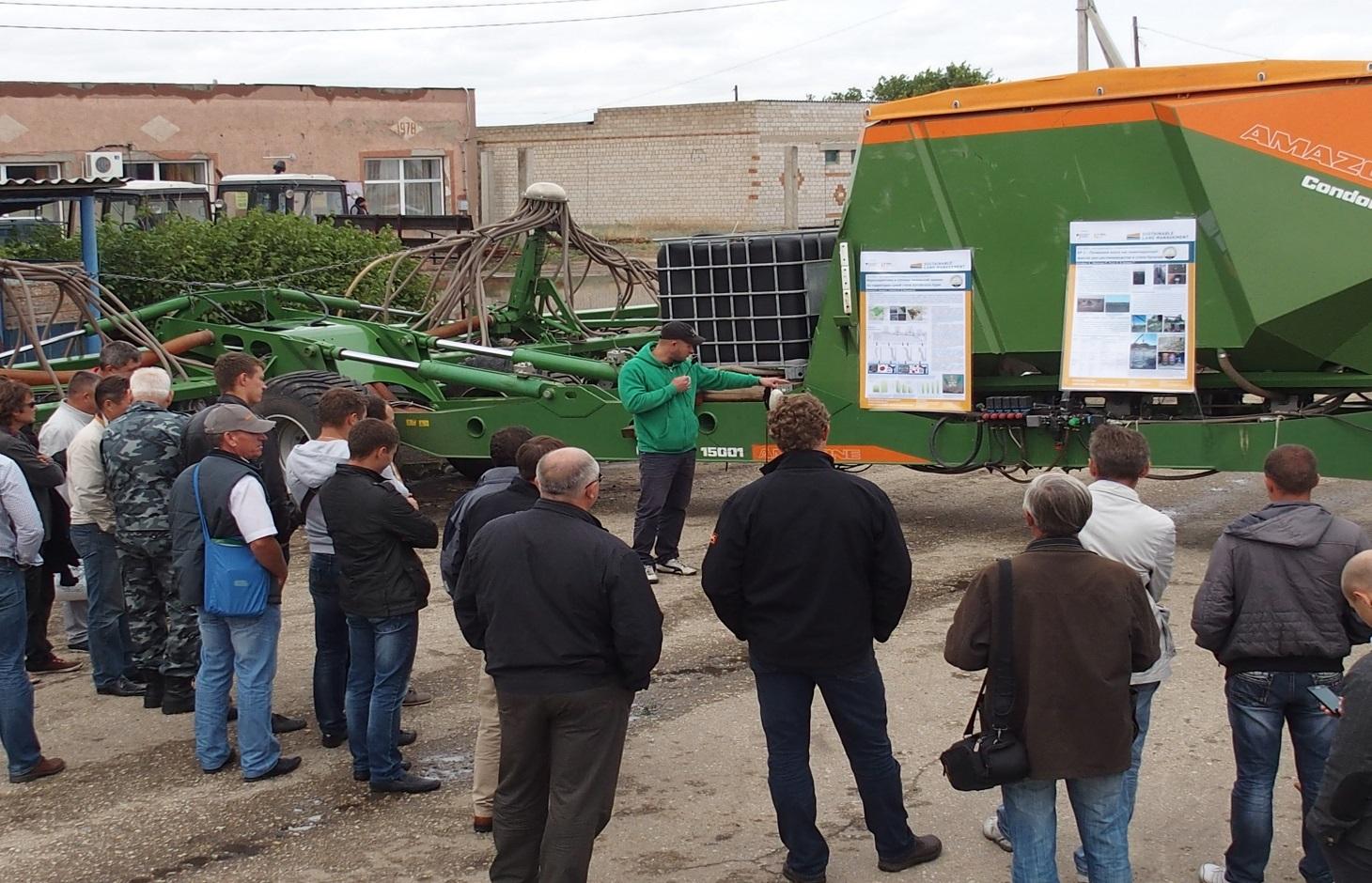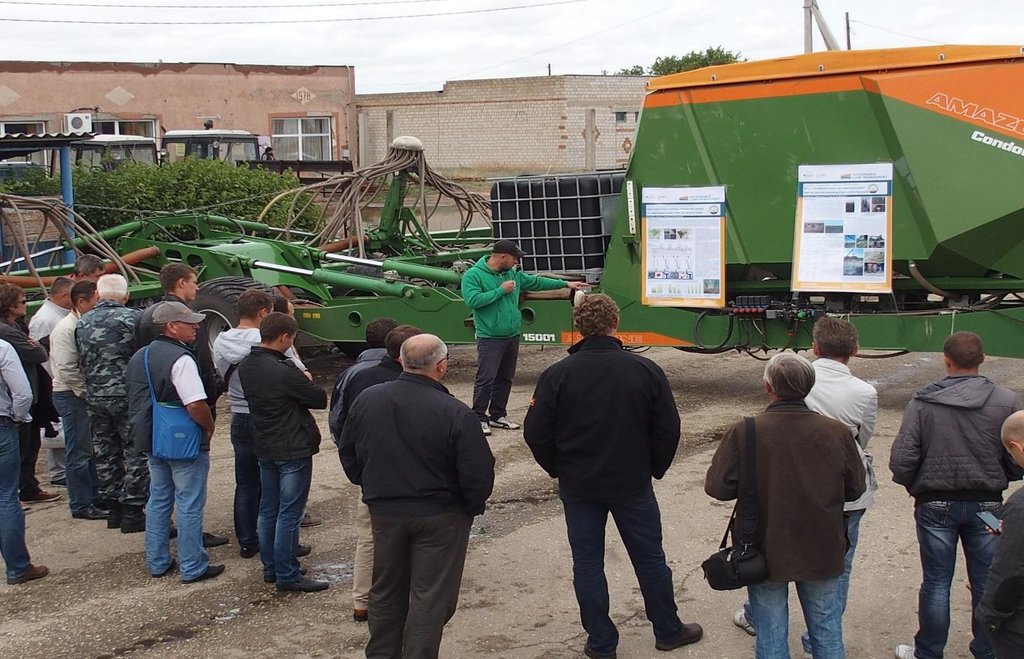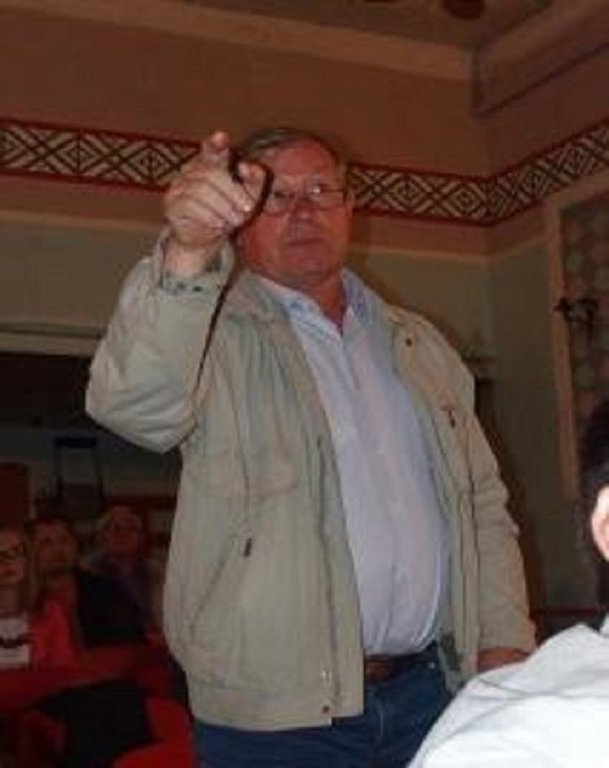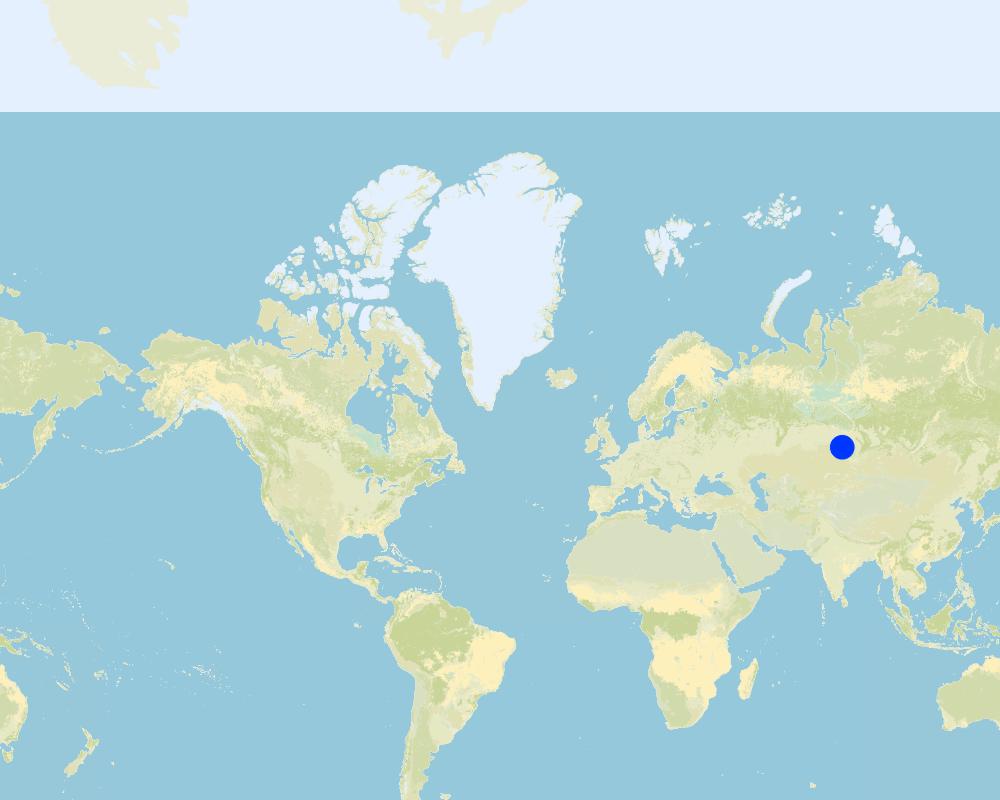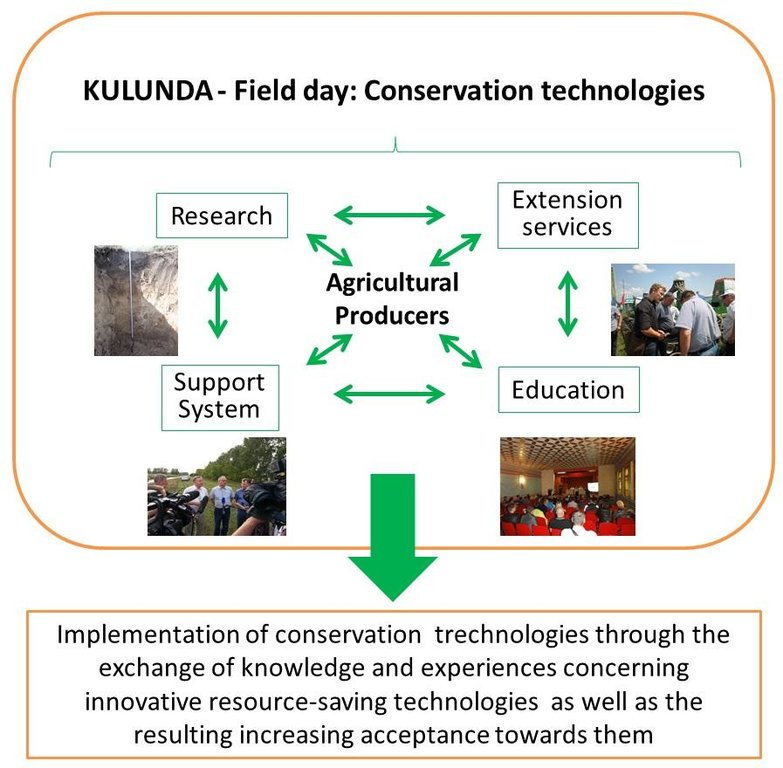Field days [Russian Federation]
- Creation:
- Update:
- Compiler: Peter Liebelt
- Editor: –
- Reviewers: David Streiff, Deborah Niggli
Полевой семинар
approaches_2617 - Russian Federation
View sections
Expand all Collapse all1. General information
1.2 Contact details of resource persons and institutions involved in the assessment and documentation of the Approach
SLM specialist:
Jelinek Ladislav
Martin Luther University Halle-Wittenberg
SLM specialist:
Kasarjyan Milada
Martin Luther University Halle-Wittenberg
SLM specialist:
Wust Andreas
Martin Luther University Halle-Wittenberg
SLM specialist:
Bavorova Miroslava
Martin Luther University Halle-Wittenberg
SLM specialist:
Herzfeld Thomas
Martin Luther University Halle-Wittenberg
SLM specialist:
Imamverdiyev Nizami
Martin Luther University Halle-Wittenberg
SLM specialist:
Hiller Karsten
Martin Luther University Halle-Wittenberg
SLM specialist:
Kley Dorothee
Martin Luther University Halle-Wittenberg
SLM specialist:
Illiger Patrick
Martin Luther University Halle-Wittenberg
SLM specialist:
Frühauf Manfred
Martin Luther University Halle-Wittenberg
Name of project which facilitated the documentation/ evaluation of the Approach (if relevant)
Sustainable land management in the Russian steppes (KULUNDA / GLUES)Name of project which facilitated the documentation/ evaluation of the Approach (if relevant)
Book project: Making sense of research for sustainable land management (GLUES)Name of the institution(s) which facilitated the documentation/ evaluation of the Approach (if relevant)
Martin-Luther-University Halle-Wittenberg (Martin-Luther-University Halle-Wittenberg) - Germany1.3 Conditions regarding the use of data documented through WOCAT
When were the data compiled (in the field)?
19/07/2016
The compiler and key resource person(s) accept the conditions regarding the use of data documented through WOCAT:
Yes
1.4 Reference(s) to Questionnaire(s) on SLM Technologies
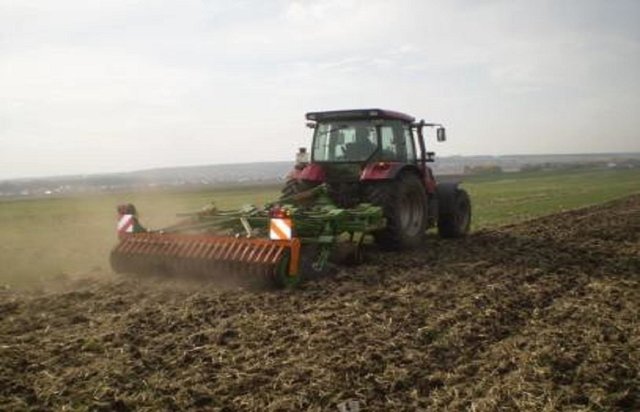
Minimum Tillage [Russian Federation]
Minimum tillage is a one-pass operation combined with sowing, using a classic Russian seeder modified for seedbed preparation and soil mixing. It can include shallow stubble cultivation after harvesting.
- Compiler: Peter Liebelt
2. Description of the SLM Approach
2.1 Short description of the Approach
Field days are events for regional stakeholders, mainly farmers in the study area, to discuss their demands regarding scientific help, and to be informed about the activities and results of new methods and technologies for conservation agriculture.
2.2 Detailed description of the Approach
Detailed description of the Approach:
Aims / objectives: The approach aimed at raising awareness, encouraging exchange and communication for new sustainable land management (SLM) technologies including no-till and minimum till. The main goal - implementation of improved SLM technologies – was intended to be achieved through capacity building and strengthening of the acceptance of new technologies Field days, organized at a partner farm/ study site in Poluyamki (Mikhailovski Rayon), were a suitable framework for the achievement of this goal. Another objective of the field day is cooperation and networking between farmers, scientists, representatives of the regional politics and administration, and commercial companies. This stimulates the exchange of knowledge and the dissemination of new information about SLM - which is very important for the successful implementation and evolution of the technology.
Methods: For effective presentation of the minimum and no-till cropping systems to the public, and to give everyone present at the field day the opportunity to inform themselves about conservation measures, an information point was set up by the project. For spread of information about research activities, results and recommendations, posters were presented - and leaflets and brochures were handed out. In this way it was possible to promote knowledge transfer from the scientists to the farmers, and to receive feedback.
Stages of implementation: Furthermore, interdisciplinary and transdisciplinary knowledge exchange and discussion was initiated about the results and recommendations, which were based on the presentations given in the community centre. Due to the participation of many important local stakeholder groups, the field day was a suitable platform to contribute to network-building. Also, among the participants were private companies working in the agrarian sector. The cooperation partner of the research project, the Amazone company, also made presentations. In the study site the new tillage systems are already working. Furthermore the test farm unit in Poluyamki has also started to implement no-till and minimum tillage systems on fields outside the test farm, on farmer’s fields that do not belong to the project’s research sites and are not under the control of the project staff.
Role of stakeholders: Farmers are the stakeholders of primary importance, since it is hoped they will take up and implement the conservation technologies. Therefore most participants during the field day were farmers. Those invited are interested in new technologies and have the necessary financial power to invest in new technologies. The chances of successful implementation in their farms are very good. Most of these farms already have experience in conservation technologies. In the investigation area, about 20-30% of land is already cropped/ cultivated under some form of conservation soil tillage.
2.3 Photos of the Approach
2.5 Country/ region/ locations where the Approach has been applied
Country:
Russian Federation
Region/ State/ Province:
Altai Krai
Further specification of location:
Mikhaylovski district / rayon
Comments:
Area of the test field: 0.13 km2
Total farmland, where the field day was organized: 250 km2
Whole investigation area, where the participants of the field day came from 80 000 km2
Map
×2.6 Dates of initiation and termination of the Approach
Indicate year of initiation:
2013
Year of termination (if Approach is no longer applied):
2016
2.7 Type of Approach
- project/ programme based
2.8 Main aims/ objectives of the Approach
The Approach focused mainly on SLM with other activities (Awareness raising for the importance of environmental as well as economic sustainability)
Improvement of technology adoption through: Awareness raising, knowledge exchange and transfer, capacity building
The SLM Approach addressed the following problems: - Low agricultural production of conventional/ traditional farming systems
- Limited economic efficiency of conventional/ traditional cropping systems
- Lack of soil water and decrease of soil fertility under conventional/ traditional farming systems
- lack of technical knowledge to implement modern adapted technologies for cropping and cope with more extreme events such as drought
2.9 Conditions enabling or hindering implementation of the Technology/ Technologies applied under the Approach
social/ cultural/ religious norms and values
- hindering
Historically-caused low levels of trust among land users and other local stakeholder groups like education institutions or consulting services, among others, limits the adoption of “good farming practices”.
Treatment through the SLM Approach: The field days and exchange of practice – oriented knowledge increased the confidence of farmers. This constraint can be addressed by specifically targeted policies, e.g. provision of grants or credit for the establishment of producer groups.
availability/ access to financial resources and services
- hindering
High cost of new minimum and no-till machinery and difficult access to credits. Budget limitations are proportionately greater with smaller farms (highly variable yields reduce farm profitability, limited access to external funds)
Treatment through the SLM Approach: Subsidised interest rates for machinery. In 2015 machinery for no-till tillage was not susidized.
Demonstrate that environmentally friendly innovative farming technologies are profitable and worthwhile to invest in.
institutional setting
- hindering
Unfavourable framework conditions and low capacity of the administration to monitor the state of land and to enforce the soil protection law which would oblige land users to adopt conservation measures.
Treatment through the SLM Approach: The approach did not address this factor.
legal framework (land tenure, land and water use rights)
- hindering
Unclear land use rights. High share of rented land. Missing incentives to stimulate land users to adopt conservation practices. Secure land use rights motivates to more conscious care for the land and stimulates farmers to adopt better practices.
Treatment through the SLM Approach: To make the best of private ownership, land users need to get a better concept of farming as a business. Strengthen the role of the ‘state redistribution of funding’ system (between different branches of the economy).
The existing land ownership, land use rights / water rights moderately hindered the approach implementation There are still some legislative and administrative weaknesses that limit the full execution of the ownership rights (non-defined borders, lacking cadastral registration of some plots, missing owners, etc.). Furthermore, around half of the land utilized in Altai Krai is owned by the state (of that around 2 milion hectares are administered by the Redistribution Fund). Another aspect is the capacity of the state monitoring agency (State Veterinary and Phytosanitary Controls) to control the compliance of the rules provided the land use conditions are stricter.
knowledge about SLM, access to technical support
- hindering
In Russia conventional / traditional cultivation still prevails. although market for no-till technologies is fully developed and functional. Various machinery companies either have branches or production units in Russia.
Treatment through the SLM Approach: More events where experience and results of min- and no-till can be shared and discussed.
3. Participation and roles of stakeholders involved
3.1 Stakeholders involved in the Approach and their roles
- local land users/ local communities
Local farmers of the Altai Krai
- community-based organizations
Local farm cooperatives of the Altai Krai
- SLM specialists/ agricultural advisers
Regional advisors and national SLM specialists and international specialist (KULUNDA scientists)
- local government
Politicians of the territory level (Altai Krai) and district level Mikhayloski rayon.
- Staff member of the project
German and Russian scientists of the project
3.2 Involvement of local land users/ local communities in the different phases of the Approach
| Involvement of local land users/ local communities | Specify who was involved and describe activities | |
|---|---|---|
| initiation/ motivation | interactive | Experimental plots, demonstration plots and field days were held on land users farms |
| planning | interactive | |
| implementation | interactive | |
| monitoring/ evaluation | interactive | |
| Research | passive |
3.3 Flow chart (if available)
Description:
The Field Day brings different stakeholder groups together and promotes new technologies and thus the implementation of conservation land use practices. This is through knowledge and exchange on resource-saving technologies.
Author:
Peter Liebelt
3.4 Decision-making on the selection of SLM Technology/ Technologies
Specify who decided on the selection of the Technology/ Technologies to be implemented:
- mainly SLM specialists, following consultation with land users
Explain:
The SLM specialists of the the KULUNDA project mainly make the decisions on the choice of the SLM technology in cooperation with the farmers.
Decisions on the method of implementing the SLM Technology were made by Project staff. At the beginning of the project a large interview campaign with relevant local stakeholders was conducted by the scientists of the KULUNDA-project. Based on the survey results, a decision on the implementation measures were made by the scientific staff on the German and Russian site with consultation with local stakeholder groups .
4. Technical support, capacity building, and knowledge management
4.1 Capacity building/ training
Was training provided to land users/ other stakeholders?
Yes
Specify who was trained:
- land users
- field staff/ advisers
Form of training:
- farmer-to-farmer
- demonstration areas
- public meetings
Subjects covered:
Competitiveness of agricultural enterprises, ecologically and economically effective farm management through the use of resource-conserving crop production, costs for introducing modern tillage systems, personnel management, monitoring systems
4.2 Advisory service
Do land users have access to an advisory service?
Yes
Specify whether advisory service is provided:
- on land users' fields
Describe/ comments:
Name of method used for advisory service: Field days for demonstration and exchange; Key elements: The field seminar was a suitable platform for knowledge exchange on agricultural production in the Kulunda steppe, Capacity building: On-field demonstration as well as poster and presentations of project results and recommendations. Discussions in the field as well as in the lecture room allowed to address individual stakeholder questions and to suggest solutions. ; Training events in the vocational centre as a suitable way for knowledge transfer to farmers and specialists (training for trainers) in agricultural sector and capacity building.
Advisory service is quite adequate to ensure the continuation of land conservation activities; There is already mainly a governmental advisory structure. The consultants are able to make recommendations for soil conserving technologies. However, international expertise and the demand of consultation by the farmers is too low.
4.4 Monitoring and evaluation
Is monitoring and evaluation part of the Approach?
Yes
Comments:
Bio-physical aspects were regular monitored by project staff, land users through observations; indicators: crop and weed development, field emergence
Bio-physical aspects were regular monitored by project staff through measurements; indicators: physical and chemical soil parameters as well as soil water
Technical aspects were regular monitored by project staff, land users through observations; indicators: observation of the functionality of the soil conserving technologies, placement accuracy
Technical aspects were regular monitored by project staff through measurements; indicators: fuel consumption, yield,
Socio-cultural aspects were ad hoc monitored by project staff through observations; indicators: attitude
Economic / production aspects were regular monitored by project staff through measurements; indicators: input costs (labour seed, fertilizer, pesticide yield, profit margin
No. of land users involved aspects were ad hoc monitored by project staff through observations
Management of Approach aspects were ad hoc monitored by None through observations
There were no changes in the Approach as a result of monitoring and evaluation
4.5 Research
Was research part of the Approach?
Yes
Specify topics:
- sociology
- economics / marketing
- ecology
- technology
5. Financing and external material support
5.1 Annual budget for the SLM component of the Approach
If precise annual budget is not known, indicate range:
- 2,000-10,000
Comments (e.g. main sources of funding/ major donors):
Approach costs were met by the following donors: international (German Ministry of Education and Research, BMBF): 50.0%; private sector (AMAZONE Company for land use technology): 50.0%
5.2 Financial/ material support provided to land users
Did land users receive financial/ material support for implementing the Technology/ Technologies?
Yes
If yes, specify type(s) of support, conditions, and provider(s):
by the agricultural company 'AMAZONE'
5.3 Subsidies for specific inputs (including labour)
- equipment
| Specify which inputs were subsidised | To which extent | Specify subsidies |
|---|---|---|
| machinery | partly financed | |
| tools | partly financed | |
- agricultural
| Specify which inputs were subsidised | To which extent | Specify subsidies |
|---|---|---|
| seeds | partly financed | |
| fertilizers | partly financed | |
If labour by land users was a substantial input, was it:
- voluntary
5.4 Credit
Was credit provided under the Approach for SLM activities?
No
6. Impact analysis and concluding statements
6.1 Impacts of the Approach
Did the Approach help land users to implement and maintain SLM Technologies?
- No
- Yes, little
- Yes, moderately
- Yes, greatly
The field day allowed the transfer of project-based results on the subject of conservation agriculture to the local farmers and other regional actors and promotes the implementation of new soil conserving methods and strategies in the research area by the farmers.
Did the Approach empower socially and economically disadvantaged groups?
- No
- Yes, little
- Yes, moderately
- Yes, greatly
The implementation of the technology is not primarily aimed at these issues.
Did the Approach improve issues of land tenure/ user rights that hindered implementation of SLM Technologies?
- No
- Yes, little
- Yes, moderately
- Yes, greatly
The problem is unlikely to be overcome in the near future.
Did other land users / projects adopt the Approach?
- No
- Yes, little
- Yes, moderately
- Yes, greatly
The field days motivated the farmers and land use specialists to implement the conservation technologies. There is no information about the number of farmers who implement as a result of the field days.
Did the Approach lead to improved livelihoods / human well-being?
- No
- Yes, little
- Yes, moderately
- Yes, greatly
By implementing the new conservation technologies the sustainability of farming systems in both the ecological and the economic sense increases.
Did the Approach help to alleviate poverty?
- No
- Yes, little
- Yes, moderately
- Yes, greatly
The implementation of the minimum till and no till technologies protect the soil as an important living and economic basis.
6.2 Main motivation of land users to implement SLM
- increased production
To minimize fluctuations in yield and to secure yield through a higher sustainability
- increased profit(ability), improved cost-benefit-ratio
Due to the higher profit margin
- reduced workload
The reduction of workload is important especialy in terms of the large farm sizes.
- payments/ subsidies
- affiliation to movement/ project/ group/ networks
Affiliation with the KULUNDA project
6.3 Sustainability of Approach activities
Can the land users sustain what has been implemented through the Approach (without external support)?
- yes
6.4 Strengths/ advantages of the Approach
| Strengths/ advantages/ opportunities in the land user’s view |
|---|
| Opportunity for farmers to get information about new agricultural machinery and other products for implementing new conservation farming system (How to sustain/ enhance this strength: More intensive and profound consultation by agricultural companies regarding new conservation technologies.) |
| Exchange of experience in sustainable land use technologies between the farmers (How to sustain/ enhance this strength: More participating farmers and a constant exchange between not only on the field days) |
| Land user, specialists and advisers all get to know about new technical findings and basic research (How to sustain/ enhance this strength: Regular meetings between the stakeholders. Inclusion of knowledgeable and successful farmers will increase the acceptance of the results presented.) |
| Strengths/ advantages/ opportunities in the compiler’s or other key resource person’s view |
|---|
| Network building - strengthening and extension of the stakeholder platform. This platform includes different stakeholder spheres: extension service, land users, those in education, scientists, other support systems (How to sustain/ enhance this strength: By inviting various stakeholder groups and by creating opportunities for communication between participants.) |
| Participation of land users allows farmer-to-farmer learning (How to sustain/ enhance this strength: Inclusion of different stakeholders for broad knowledge transfer. Large number of visitors helps to disseminate knowledge.) |
6.5 Weaknesses/ disadvantages of the Approach and ways of overcoming them
| Weaknesses/ disadvantages/ risks in the land user’s view | How can they be overcome? |
|---|---|
| Great organizational effort | More external support of field days for farmers. |
| Because of the high number of participants and the time limit field days are not well suited for coaching of individual farmers | Intensification of extension services. Initiation of additional events for advising. |
| Weaknesses/ disadvantages/ risks in the compiler’s or other key resource person’s view | How can they be overcome? |
|---|---|
| Reconciliation of basic research and applied research | Intensified cooperation between researchers and practitioners like farmers or agricultural companies |
| Limited duration of the project | By enhancing continuity of measures that are independent of the project. Strategy to initiate and promote the engagement of local partners such as the agricultural university or farmer associations / groups. |
7. References and links
7.1 Methods/ sources of information
- field visits, field surveys
- interviews with land users
Links and modules
Expand all Collapse allLinks

Minimum Tillage [Russian Federation]
Minimum tillage is a one-pass operation combined with sowing, using a classic Russian seeder modified for seedbed preparation and soil mixing. It can include shallow stubble cultivation after harvesting.
- Compiler: Peter Liebelt
Modules
No modules


